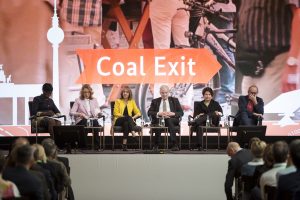Leaders in China’s motor industry have one common desire. That is to replace current cars with environmentally friendly cars in the next fifteen years, more or less.
Leaders like Yasmin Kudo, the Chairman of NYK Line, at the recent Boao Forum for Asia was quoted as saying automatic drive technology is crucial as it can help reduce the emission of carbon dioxide. He Xiaopeng, Chairman of XPENG Motors, on the one hand expressed the belief that the future of transportation means the improvement of motor efficiency.
Participants of the sub-forum, themed around “The Future of Transportation”, envision the future of transportation as green, high efficient, intelligent, and harmonious.
China’s vision comes at a time when the Southern African Development Community (SADC) is lagging behind in many areas when it comes to sustainable consumption and production practices.
Simba Mandinyenya, the Head of Research and Information Management for the Regional Tourism Organisation of Southern Africa (RETOSA) posits that it will therefore be to the benefit of the region’s tourism industry if SADC can learn, borrow and apply new more efficient and in the long term cheaper technologies in the transport sector.
He said it is necessary for SADC countries to think green when it comes to transportation because not only does the market demand the new greener transport systems, but because it also makes business sense as it is cost effective and therefore more profitable.
“Travellers do not want to spend more of their time travelling to the destination, rather they want to spend more time at the destination. If we can get our clients quickly to their destinations in a more cost-effective manner, it will take the region’s tourism sector to the next level,” he said elated by the prospects of faster cars.
He said this bearing in mind that accessibility and connectivity are major negative factors impacting on the region’s tourism growth and development.
“It is an open secret that our transport system in the SADC region, with the exception of South Africa, is not efficient and is not cost effective. This has not only affected overseas travellers travelling into and across our region but has indeed affected the growth and development of our regional and domestic markets,” he expatiated.
To make the Southern African region competitive and productive, he said SADC should not only thrive to improve on the quality and efficiency of its transport systems, but should also make them cheaper. South Africa is much ahead in this respect and all the other regional destinations are working strongly to not only harmonise the transport system, but to make it greener as well.
China’s motive to replace its current cars with greener cars emanates from its experience with pollution due to rapid industrialisation. So far China is known as one of the big players that has developed nature friendly technologies. Hence vehicles that are expected to saturate the market soon are anticipated to be cheaper, more accessible and available to developing regions like SADC.
It is imperative to note that for historical reasons the SADC market has always prefers goods from the West, however with the new global dynamics wherein the East is slowly becoming the bigger player in general economic and political developments across the world, the Southern African people are looking more and more to do business with the East and with China in particular.
-END-





